Potrebujeme váš súhlas na využitie jednotlivých dát, aby sa vám okrem iného mohli ukazovať informácie týkajúce sa vašich záujmov. Súhlas udelíte kliknutím na tlačidlo „OK“.
ASTM E2853-12
Standard Test Method for Evaluating Emergency Response Robot Capabilities: Human-System Interaction (HSI): Search Tasks: Random Mazes with Complex Terrain
Automaticky preložený názov:
Štandardná skúšobná metóda pre hodnotenie Emergency Response Robot schopností: Human-System interakcie (HSI): Hľadať Úlohy: Náhodné Bludisko s zložitý terén
NORMA vydaná dňa 1.2.2012
Informácie o norme:
Označenie normy: ASTM E2853-12
Poznámka: NEPLATNÁ
Dátum vydania normy: 1.2.2012
Kód tovaru: NS-46153
Počet strán: 11
Približná hmotnosť: 33 g (0.07 libier)
Krajina: Americká technická norma
Kategória: Technické normy ASTM
Kategórie - podobné normy:
Anotácia textu normy ASTM E2853-12 :
Keywords:
abstain, emergency responder, emergency response, flat-floor terrain element, HSI, human-scale, OCU, operator control unit, operator station, oriented strand board, OSB, repetition, robot, test suite, urban search and rescue, US&,R, ICS Number Code 13.200 (Accident and disaster control)
Doplňujúce informácie
| Significance and Use | ||||||||
|
A main purpose of using robots in emergency response operations is to enhance the safety and effectiveness of emergency responders operating in hazardous or inaccessible environments. The testing results of the candidate robot shall describe, in a statistically significant way, how reliably the robot is able to perform the specified types of tasks and thus provide emergency responders sufficiently high levels of confidence to determine the applicability of the robot. This test method addresses robot performance requirements expressed by emergency responders and representatives from other interested organizations. Robot performance data captured within this test method are indicative of the robotic system’s capabilities. Having available a roster of successfully tested robots with associated performance data to guide procurement and deployment decisions for emergency responders is consistent with the guideline of “Governments at all levels have a responsibility to develop detailed, robust, all-hazards response plans” as stated in National Response Framework. This test method is part of a test suite and is intended to provide a capability baseline for the robotic HSI subsystems based on the identified needs of the emergency response community. Adequate performance using this test suite will not ensure successful operation in all emergency response situations due to possible extreme operational difficulties. Rather, this test method is intended to provide a common comparison of technologies against a reasonable simulation of emergency response environments and to provide quantitative performance data to emergency response organizations to aid in choosing appropriate systems. This standard is also intended to encourage development of improved and innovative communications systems for use on emergency response robots. The standard apparatus is specified to be easily fabricated to facilitate self-evaluation by robot developers and provide practice tasks for emergency responders that exercise robot actuators, sensors, and operator interfaces. The standard apparatus can also be used to support operator training and to establish operator proficiency. Although the test method was developed first for emergency response robots, it may be applicable to other operational domains, such as law enforcement and armed services. |
||||||||
| 1. Scope | ||||||||
|
1.1 Purpose: 1.1.1 The purpose of this test method, as a part of a suite of human-system interactions (HSI) test methods, is to quantitatively evaluate a teleoperated ground robot’s (see Terminology E2521) capability of searching in a maze. 1.1.2 Teleoperated robots shall possess a certain set of HSI capabilities to suit critical operations such as emergency responses, including enabling the operators to search for required targets. A passage that forms on complex terrains and possesses complex and visually similar branches is a type of environments that exists in emergency response and other robotically applicable situations. The complexity often poses challenges for the operators to teleoperate the robots to conduct searches. This test method is based on a standard maze and specifies metrics and a procedure for testing the search capability. 1.1.3 Emergency response robots shall enable the operator to handle many types of tasks. The required HSI capabilities include search and navigation on different types of terrains, passages, and confined spaces. Standard test methods are required to evaluate whether candidate robots meet these requirements. 1.1.4 ASTM E54.08.01 Task Group on Robotics specifies a HSI test suite, which consists of a set of test methods for evaluating these HSI capability requirements. This random maze searching test method is a part of the HSI test suite. The apparatuses associated with the test methods challenge specific robot capabilities in repeatable ways to facilitate comparison of different robot models as well as particular configurations of similar robot models. (See Fig. 1.) 1.1.5 The test methods quantify elemental HSI capabilities necessary for ground robots intended for emergency response applications. As such, based on their particular capability requirements, users of this test suite can select only the applicable test methods and can individually weight particular test methods or particular metrics within a test method. The testing results should collectively represent a ground robot’s overall HSI capability. The test results can be used to guide procurement specifications and acceptance testing for robots intended for emergency response applications. Note 1—The teleoperation performance is affected by the robot’s as well as the operator’s capabilities. Among all the standard test methods that ASTM E54.08.01 Task Group on Robotics has specified, some depend more on the former while the others on the latter, but it would be extremely hard to totally isolate the two factors. This HSI test suite is specified to focus on evaluating the operator’s capabilities of interacting with the robotic system, whereas a separately specified sensor test suite, including Test Method E2566, focuses on the robots’ sensing capabilities. Note 2—As robotic systems are more widely applied, emergency responders might identify additional or advanced HSI capability requirements to help them respond to emergency situations. They might also desire to use robots with higher levels of autonomy, beyond teleoperation to help reduce their workloadsee NIST Special Publication 1011-II-1.0. Further, emergency responders in expanded emergency response domains might also desire to apply robotic technologies to their situations, a source for new sets of requirements. As a result, additional standards within the suite would be developed. This standard is, nevertheless, standalone and complete. 1.2 Performing Location—This test method shall be performed in a testing laboratory or the field where the specified apparatus and environmental conditions are implemented. 1.3 Units—The values stated in SI units are to be regarded as the standard. The values given in parentheses are not precise mathematical conversions to inch-pound units. They are close approximate equivalents for the purpose of specifying material dimensions that are readily available to avoid excessive fabrication costs of test apparatuses while maintaining repeatability and reproducibility of the test method results. These values given in parentheses are provided for information only and are not considered standard. 1.4 This standard does not purport to address all of the safety concerns, if any, associated with its use. It is the responsibility of the user of this standard to establish appropriate safety and health practices and determine the applicability of regulatory limitations prior to use.
|
||||||||
| 2. Referenced Documents | ||||||||
|
Podobné normy:
Historická
1.9.2010
Historická
1.9.2010
Historická
1.6.2014
Historická
15.12.2010
Historická
15.12.2011
Historická
1.7.2011


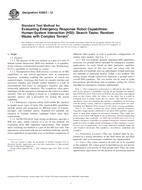
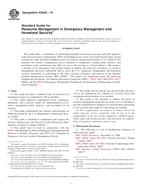 ASTM E2640-10
ASTM E2640-10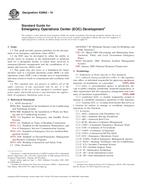 ASTM E2668-10
ASTM E2668-10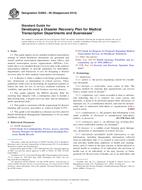 ASTM E2682-09(2014)..
ASTM E2682-09(2014)..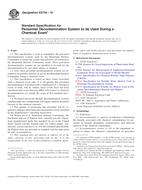 ASTM E2739-10
ASTM E2739-10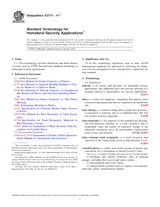 ASTM E2771-11e1
ASTM E2771-11e1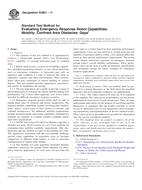 ASTM E2801-11
ASTM E2801-11
 Cookies
Cookies
